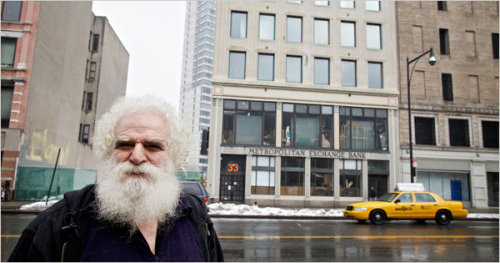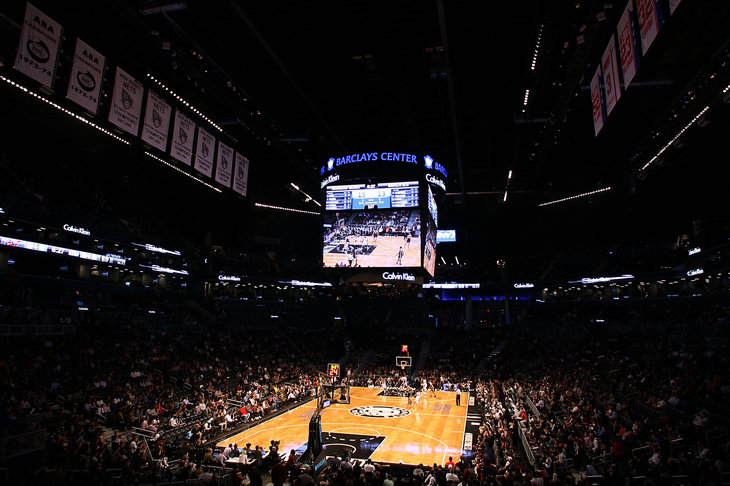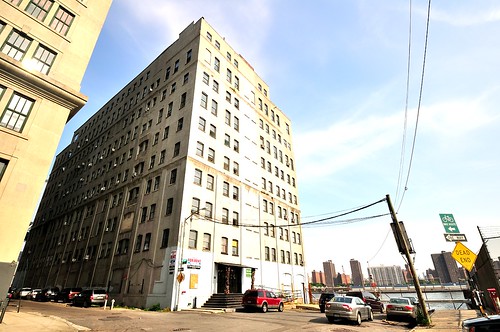Back in 2006, when I started working on putting together some community groups for entrepreneurs and tech people, I looked for a better name to reference this collection of people. "Tech community" seemed too much about people soldering things together and writing code. Not only did I want it to include people working on the future of digital media at ABC, but I also had in mind the roll that other types of creative people have in the inspiration of a city. I wanted someone who was experimenting with computer controlled LEDs as an art form to feel part of the community as well--which is why I started referring to it as the "Innovation Community". Anyone who was doing something new and cutting edge should feel connected to each other--whether or not they are building a venture backed startup.
It's even more relevant now that I've started the first venture capital fund in Brooklyn--Brooklyn Bridge Ventures--and invested in four Brooklyn based companies. This outer borough community is fueled by the creativity of an even wider assortment of innovators--and what I find most interesting is where they do what they do. Commercial space is a problem in Brooklyn--there just isn't enough of it in the areas where people are building interesting companies, and the amount of it is shrinking. It's a lot more lucrative to convert a warehouse into a condo building--especially if it's anywhere near the city--but it's those areas where innovators are creating economic opportunity as well, and where they need commercial space to thrive. That's why I thought it fitting to feature some of the key buildings where people are innovating in Brooklyn, or where they soon will be, and helping ensure Brooklyn's future as the preeminent destination for creative entrepreneurship.
33 Flatbush
 Picture: Benjamin Norman for The New York Times
Picture: Benjamin Norman for The New York Times
The definitive article about 33 Flatbush--the kind of commercial building you would drive by a million times without thinking twice--was written in the NY Times a few years ago. It depicts the building's owner, Al Attara--a native Brooklynite and a Parsons graduate--as a creative visionary:
"When Al Attara bought a former bank on Flatbush Avenue in Brooklyn 32 years ago for under $250,000, he envisioned it as a complex in which artists, architects and furniture designers would work side by side and share ownership of the 45,000-square-foot space...A menagerie of creative entrepreneurs occupies the seven-story building, now known as the Metropolitan Exchange, or MEx, including biotechnologists, ecologically minded architects, organic fashion designers and even miniature-cupcake makers. Most came in search of cheap rent — which runs to around $400 per desk per month — and a place to hatch their start-ups. The open floor plans, communal kitchens and Mr. Attara’s philanthropic nature have made for an unusually symbiotic work environment, tenants say."
What makes this building special is that you've got an owner that is sympathetic to the needs of creative entrepreneurs--and one that understands that it doesn't take much more than a roof over your head and to be surrounded by other inspirational people to form a great workspace. I've been there to visit the DIY biolab Genspace and what struck me was how it seemed like everything in the building just seemed like it was always there--like some very thoughtful people took a roomful of junk and said, "Hey, we could create some cool stuff here, learn science, change the world... anyone using these barstools and this old printing press?" It's the kind of place you just don't find in Manhattan, and definitely don't find in Silicon Valley.
10 Jay Street
Name the building in New York City that played host to Run-DMC's last show that also gave birth to three companies that got venture funded in the last year. Give up? Look no further than 10 Jay Street, a building that once held the kind of raves that sound like a Stefan joke on Saturday Night Life--where you might fund "propane fueled games of Simon".
According to its Wikipedia entry, by day, the Lunatarium was an electronics refurbishing company; by night it served as a free rehearsal space for the fire spinners who performed at events. Party-goers took the freight elevator to the ninth floor and watched pyrotechnics in the well-loved loading-dock / “shanty-town” area behind the building. Constructions such as inflatable plastic lounges(photos here and here ), giant see-saws, and art projects involving flame throwers provided entertainment for the 800 to 1500 partygoers that showed up each weekend night.
Nowadays, the building functions as Brooklyn's version of Building 20 at MIT. The seemingly temporary nature of the building has allowed its residents to organically grow--often right through the walls of the building.
via DumboNYC
At the centure of this quirky building that houses an advertising school, a yoga studio, and video production companies is Studiomates--"a collaborative workspace of designers, illustrators, bloggers, writers, and developers" run by Tina Eisenberg--perhaps better known as Swiss Miss. By curating a community where the filter is ostensibly "creative awesomeness", she has not only built an interesting place to work, but she is powering a significant economic engine that is now being fueled by venture capital dollars. Three companies from the Studiomates community--Sherpaa, Tinybop, and Editorially--received VC dollars in 2012. On a per resident, annualized bases, that's tops for any kind of co-working or incubation space in the city--but, unlike in similar setups, that's not even the goal of the space. Tina simply desires to facilitate a great place for creative people to work--and it's sort of a microcosm of the borough. Creative people want to work here--and they'll do so given simple, flexible setups, and it doesn't matter if the spaces are shiny or new, so long as they can be made into something for innovators to call their own.
The Batcave
When Joshua Rechnitz purchased the Brooklyn Batcave on the Gowanus for a reported $7 million, you might have thought to yourself, "Perhaps it's cheaper than I thought to be Batman." Turns out, it's not that kind of lair. A former MTA power facility, this building has also played host so some of the wildest parties the city has ever seen.

Interior of the Batcave, 2006 (Jake Dobkin / Gothamist)
The new owner isn't going to be putting any tech startups in the building--he's going to make the space more inhabitable for artists and their work. By supporting the borough's creative class, the building will be an important part of an ecosystem where the line between entrepreneurs and artists will undoubtedly be pretty blurry--and that same front end developer working on the next big web startup is likely to also be freelance coding on some kind of interactive transmedia art piece.
55 Washington Street
If you're going to have a real startup community, the pundits say you need a billion dollar exit. Right now, the odds-on favorite to do that first in Brooklyn is Etsy, the global marketplace of individual craftspeople and makers. Etsy is headquartered in 55 Washington Street, which is owned by Two Trees--the real estate concern that pretty much created the DUMBO we know today.

via Brownstoner
I have a special relationship with Etsy, because I was at Union Square Ventures, the VC firm that backed the company, back in 2006. I got to be part of the first meeting between Fred Wilson and founder Rob Kalin--we took the subway out to Brooklyn to meet with the team of four as they were working out of a Fort Greene apartment. It was the first time I got to visit a Brooklyn startup--and so it's that much more meaningful for me now that I'm getting to invest out of the first Brooklyn-based fund seven years later.
Perhaps Etsy will be known as the Paypal of Brooklyn--as it has already started to throw off startups created by former employees, like Clockwork--the HR software brainchild of Isaac Oates, who built Etsy's payments system.
The Pencil Factory
 via GreenpointersKickstarter has been one of the most transformational companies in the creative landscape. Last year, the company crowdfunded more money to artists than the National Endowment for the Arts.
via GreenpointersKickstarter has been one of the most transformational companies in the creative landscape. Last year, the company crowdfunded more money to artists than the National Endowment for the Arts.
After starting out in Vinegar Hill, the company will be returning to Brooklyn to their new "permanent" location in Greenpoint--an old abandoned pencil factory that they're currently renovating. (Check out how fantastic the vision for this building is...)
Kickstarter's duel role as an interesting startup and a source of capital for the creative community makes it's headquarters in Brooklyn an epicenter of innovation--one that will impact generations to come.
Barclays Center

Alex Trautwig
 [Photo by Julienne Schaer via Crain's.]
[Photo by Julienne Schaer via Crain's.]



